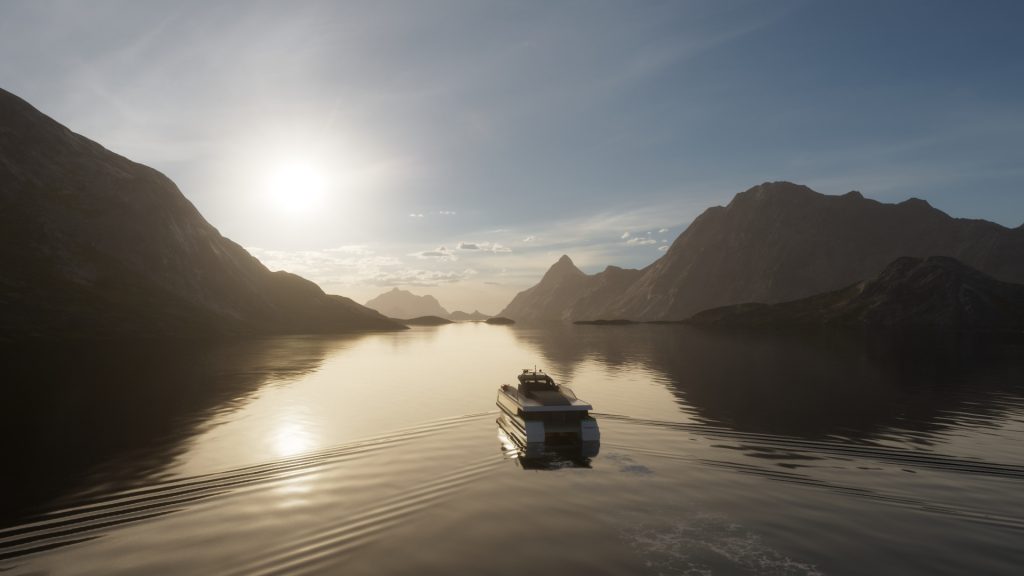Hardanger, Norway – Partners in the TrAM (Transport – Advanced and Modular) project announced that construction has commenced on the world’s first fully electric passenger fast ferry at the Fjellstrand shipyard on the west coast of Norway.
Designed to carry around 150 passengers, the catamaran vessel will be 31 metres long with a nine-metre beam. It will be equipped with two electric motors and a 1.5MWh capacity battery with charging power of more than 2MW. This will be the world’s first fully electric and zero-emission fast ferry classed in accordance with the International Code of Safety for High-Speed Crafts (HSC Code). As the TrAM project’s demonstrator vessel, it will begin a trial passenger service between the city of Stavanger and surrounding communities and islands in the spring of 2022 to test and validate the project findings. The vessel has been designed for a service speed of 23 knots and has been named Medstraum (literally ‘with electricity’ and ‘co-current‘ in Norwegian).
The TrAM project was initiated by industry cluster organization NCE Maritime CleanTech and is being coordinated by Kolumbus, the independent mobility services arm of Rogaland County Council. “TrAM’s overall aim is to develop new modular methods for the design and production of zero-emission fast ferries for inshore passenger transport, in order to reduce investment costs and delivery time,” said project manager Mikal Dahle of Kolumbus.
The TrAM project scope also includes the development of two further ‘replicator’ vessels, one for passenger operations on the River Thames in London and the other for deployment on inland waterways in Belgium.
The project partners have worked hard to optimize the design of the Medstraum and the hydrodynamic performance of the hull. Both the hull and superstructure will be built in aluminium, which in addition to low weight for lower energy consumption contributes to the circular economy as it is easy to recycle.
Hege Økland, CEO of NCE Maritime CleanTech, emphasizes that electric-powered high-speed vessels are highly relevant for urban areas all over the world. “Streamlined manufacturing is a very important factor as it increases the attractiveness of such vessels in terms of cost and footprint. In addition to their green credentials, they also support the renewed use of inshore waterways in Europe for freight and passenger transport,” she said.
The TrAM consortium includes 13 European partners, and is coordinated by Rogaland City Council (NO) through its independent mobility services company Kolumbus (NO) which will also own and operate the demonstrator vessel. The demonstrator is designed and will be built by Fjellstrand shipyard (NO) with energy system provided by Wärtsilä (NO) and propulsion system by Servogear (NO). Vessel modules will be delivered by Leirvik (NO) with aluminium supplied by Hydro Extrusion Norway (NO). Fraunhofer (D) leads the work in adapting modularity models from the automotive and aviation industry to the needs of the maritime industry, in addition to smart city integration. University of Strathclyde (UK), National Technical University of Athens (GR) and HSVA (D) are consortium members responsible for R&D, simulation and testing. Dissemination activities are provided by NCE Maritime CleanTech (NO) and owners of the replicator cases are Uber Boats by Thames Clippers (UK) and De Vlamsee Waterveg NV (B).
Artist’s impression of the fully electric, zero-emission fast ferry Medstraum now under construction at Norwegian shipyard Fjellstrand / Photos: Kolumbus/NCE Maritime Cleantech






